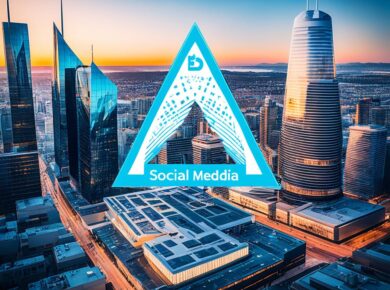It is easy to think of your various digital platforms as being linked together to the point of ubiquity, but each serves a unique function and offer their own strengths. If they did not, there would be no need to have all of them at all.
Knowing this, you can put yourself in a better position to explore the depth of what each platform allows – giving users a reason to hop from your social media pages to your website and back again and download your app to explore a more curated digital space.
1. A Digital Hub – Website/App
The ultimate purpose of your core, bespoke platforms, is that audiences can find their way towards them and have all of the information they need about your brand at their fingertips. This is usually where a pathway towards direct engagement is laid out – once your audiences are on your website, they are able to then get in touch to buy your product or enlist your services. Alternatively, having access to all of the information about where your brand came from and what it stands for can help them make this decision. For this reason, having a robust contact page is important, as it can allow a given audience member access to anything they might want from your brand.
Your app is much the same – but the distinction here is that your website is more generally accessible without less commitment. In contrast, your app could be more focused on your services, requiring a download and generally signaling a higher level of involvement.
2. Audience Involvement – Social Media
To some businesses, social media pages can feel like a small step on the way to a dedicated website. Early on in business, when you lack the resources to develop your website properly, these platforms can even feel like a temporary replacement. Still, it would be a mistake to think that they lose their efficacy once you have a dedicated site. On the contrary, there is a lot more than your social media pages can do once it has a website to support – taking some of the pressure off of these pages to be both channels for marketing as well as hubs of information.
However, when you are utilizing your social media pages, it is important to recognize the value of two-way interactions. Rather than just being a vehicle for you to get your word out, it is also a way for your audiences to speak to you and share your content. This can give you a much better idea of how your audiences perceive your brand, providing a more informal ground for discussion than what might be found through customer feedback.
3. All Roads Lead To – Website
One of those functions of your social media pages that come out once you have a website as well is the ability to link your site to them, increasing traffic (potentially in both directions). However, it is not just your social media pages that can achieve this. If you are also involved with search engine optimization marketing campaigns, your various links across numerous blogs all over the internet will help to draw in entirely new audiences.
Having your website function as a central hub has already shown to be a great way of providing your audiences with everything that they need to know about your brand as soon as they arrive – but making it as easy as possible for people to get there in the first place can really help it to thrive in that role.
4. A Curated Space – App
This is also true of your website in many ways, but the degree of control that you have over your app as a space can bring it into its own. In many ways this can stand as one of the central marketing components for your app in the first place. If you are trying to encourage audiences who have been with your brand for years – who already use all of your digital platforms and engage with your services – to download your app, they might want to know why they should. The fact that it could represent the most optimal way to experience your brand, is the ideal promise – the idea that your app might be able to improve what your brand already offers. This should be reflected in the aesthetic, the navigation and the function – potentially even using tools like Istio API gateway to create a seamless and enjoyable experience that keeps audiences coming back.
5. Holistic Digital Branding – Website/App/Social Media
Over time, once all of these objectives have been accomplished, your brand can put itself in a position where its digital presence is robust and consistent. That does not mean that it will never need to be updated – you want to ensure that you are always improving each of these platforms – but it does mean that you have laid the groundwork for an interconnected presence that can enhance the user experience. Now, you have made your brand as accessible as possible for your audience. As soon as they find themselves caught in the current of just one of these platforms, they can also easily find their way to the others, and across all of them, they are shown a new strength of your brand while still in the comfort of its familiar aesthetic and tone.
Read Next:
Squarespace vs Wix: Best Website Builder for E-commerce
How to Spot AI-Generated YouTube Shorts Before They Trick You






